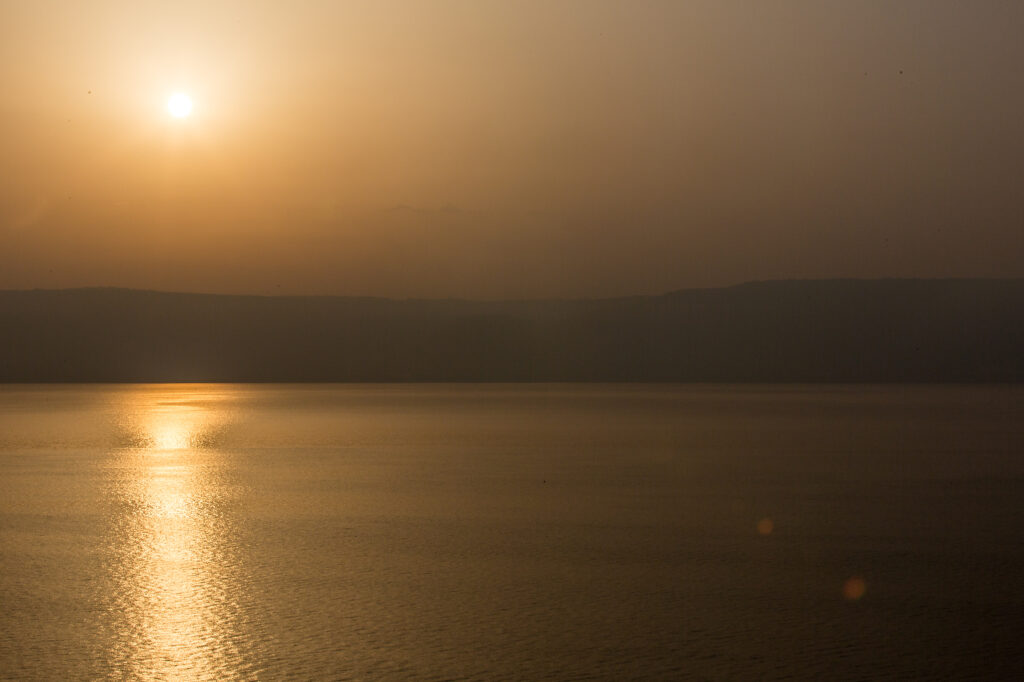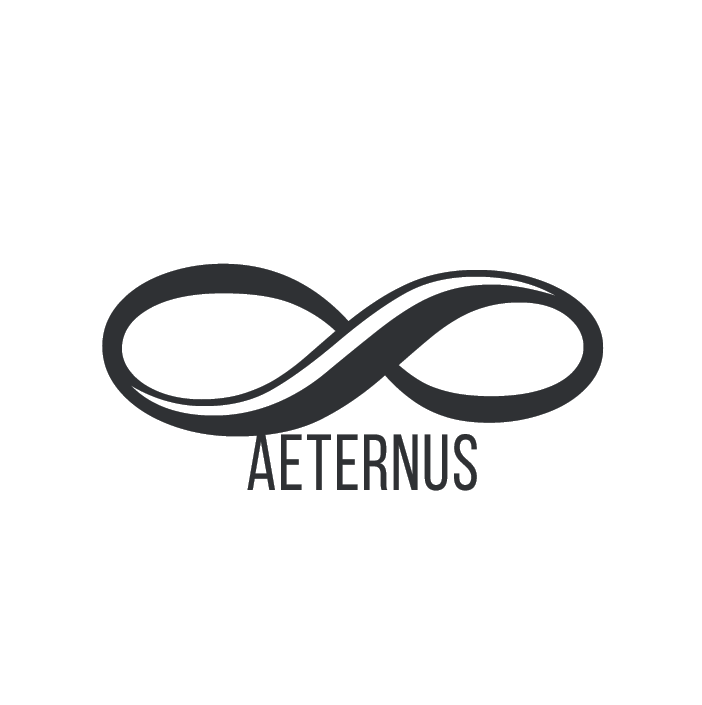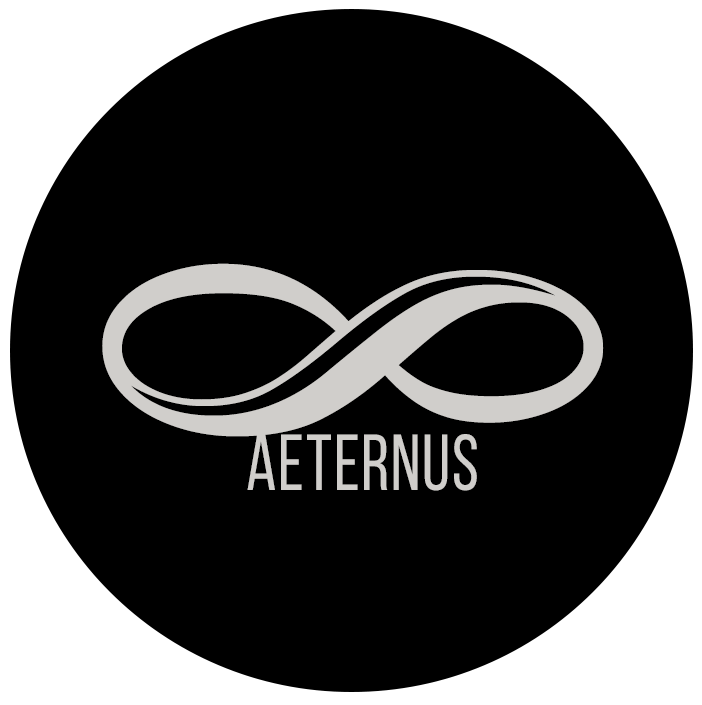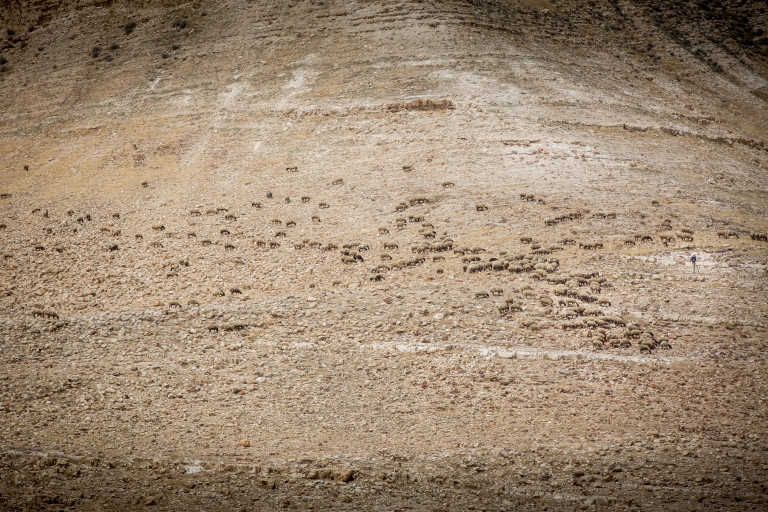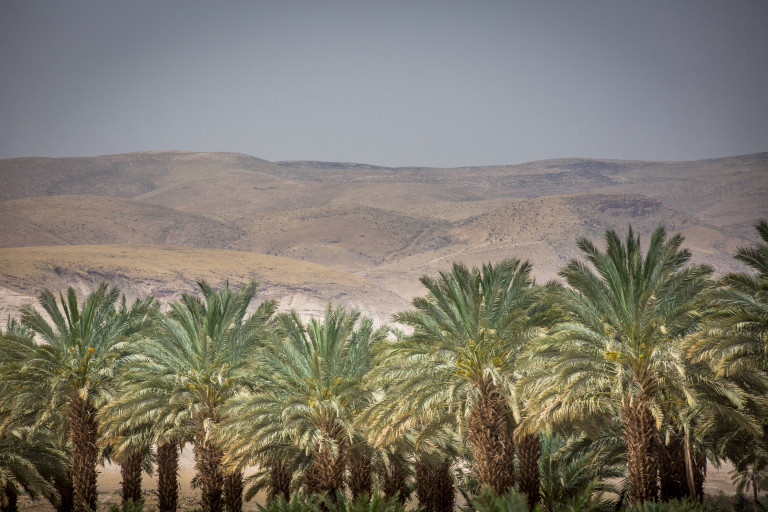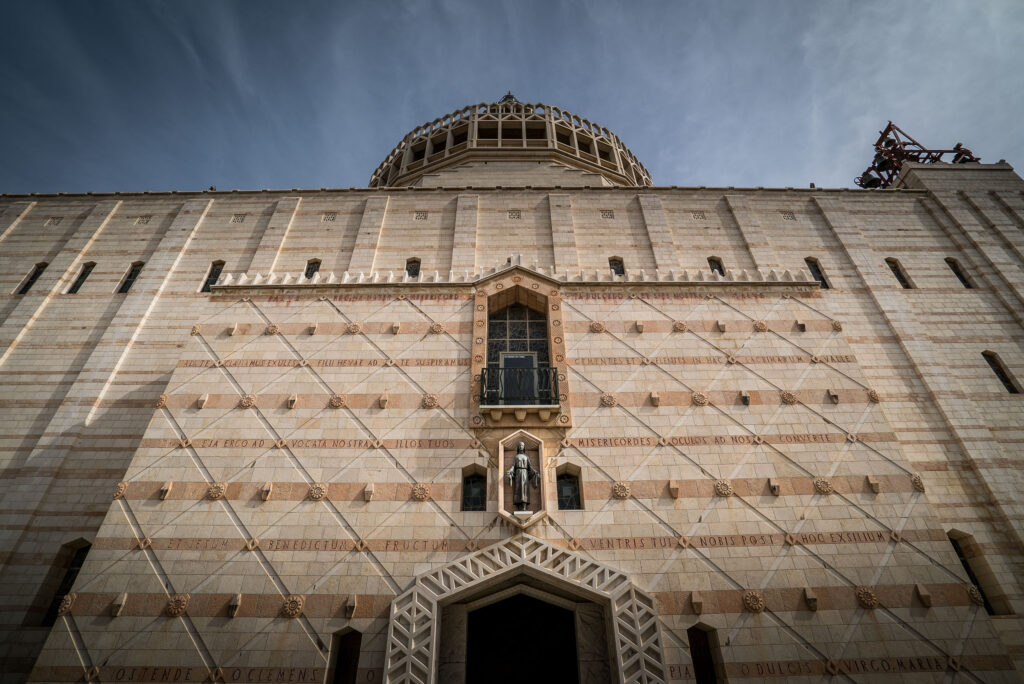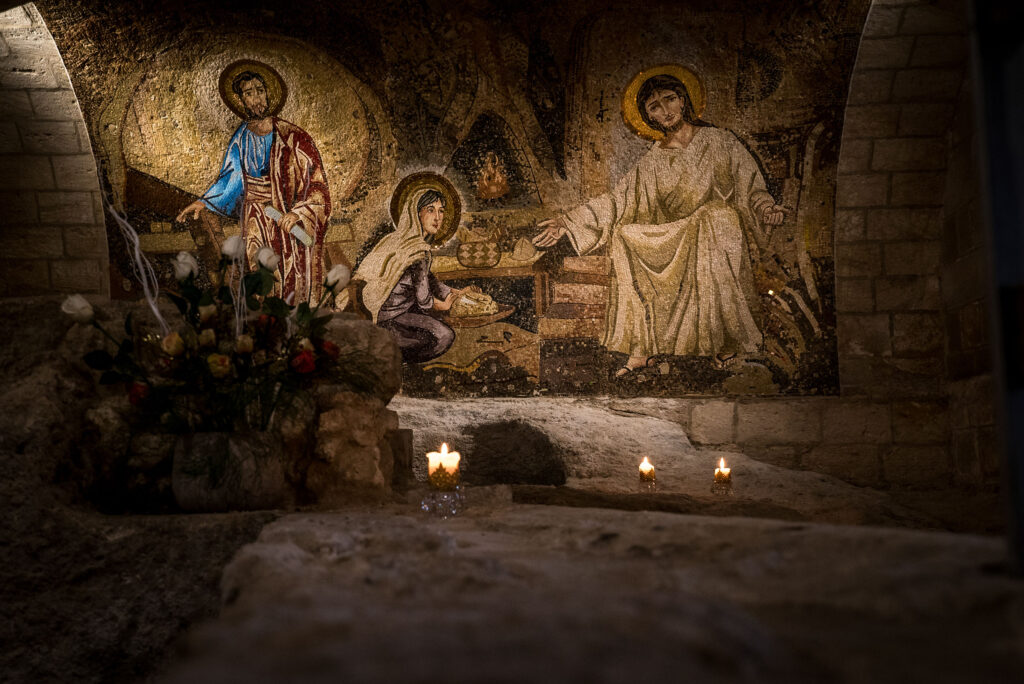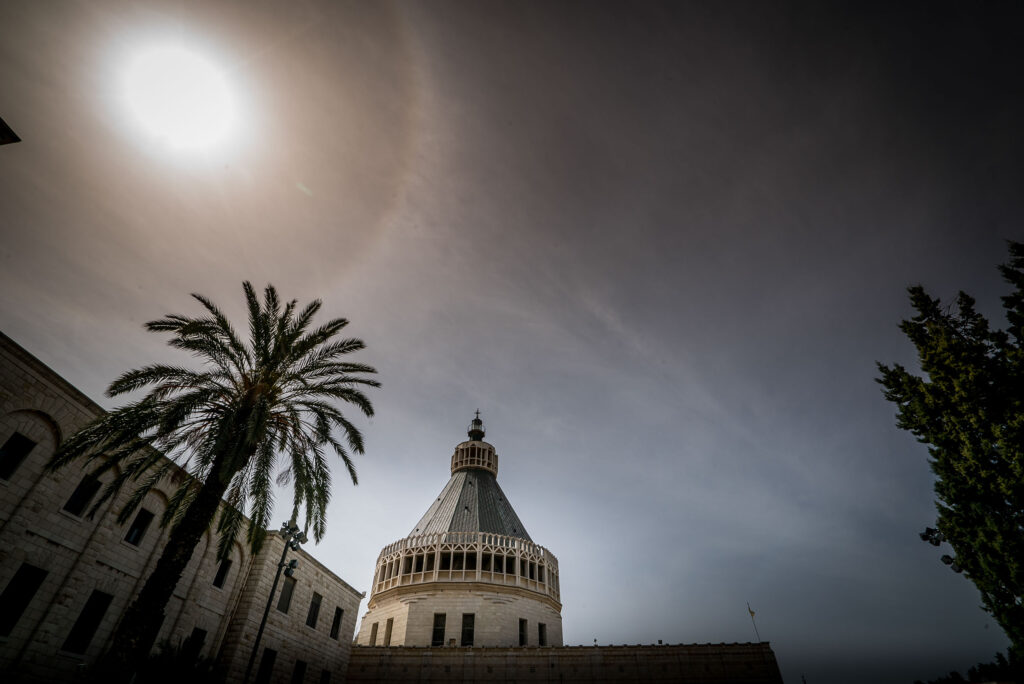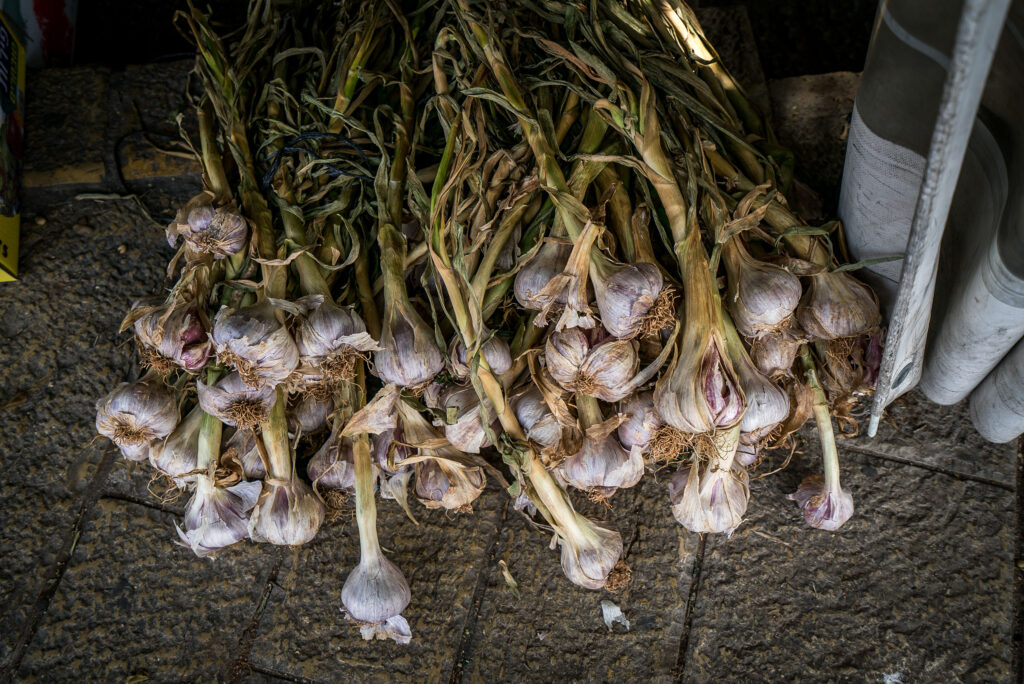Where the WORD walked & I did too |
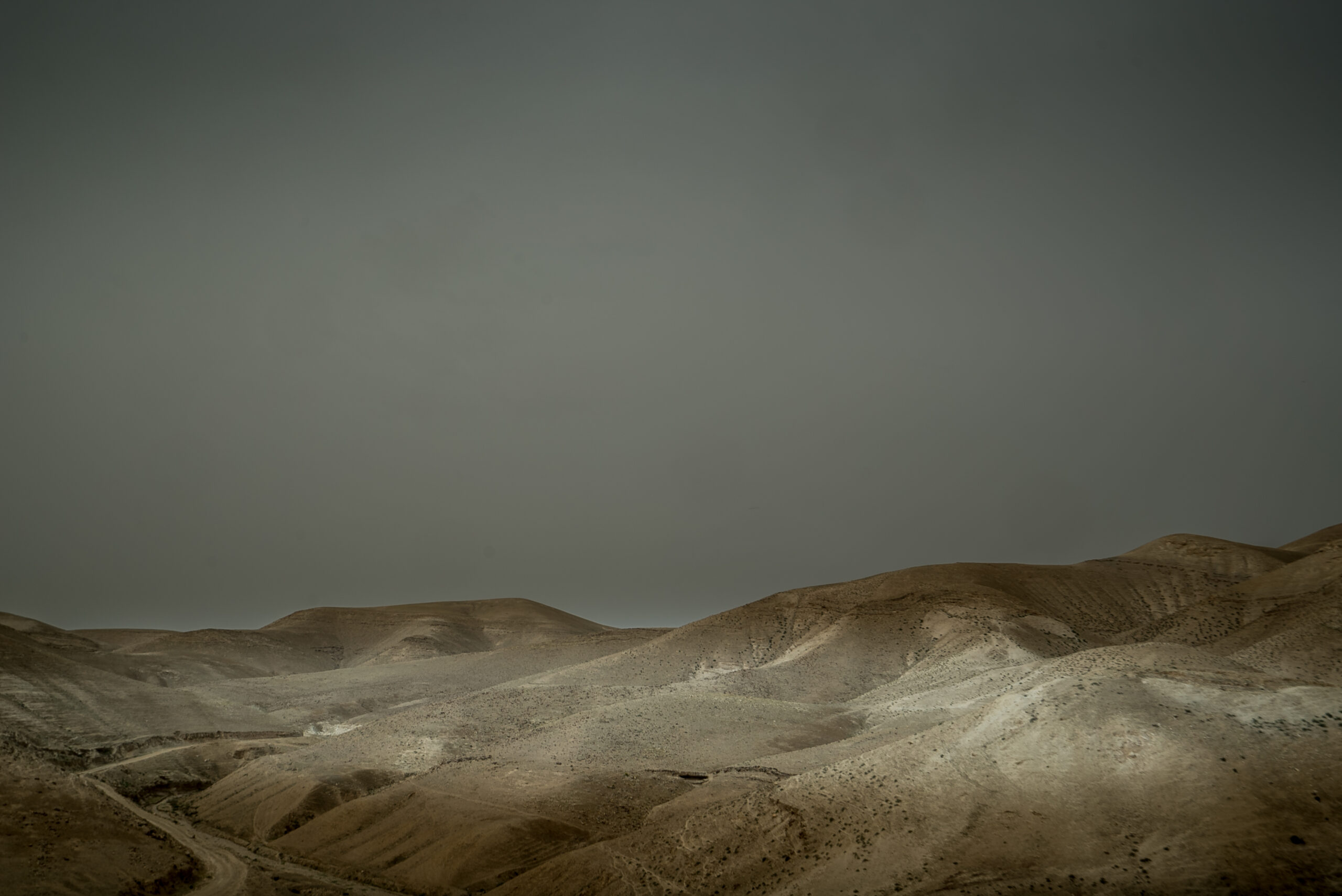

As a guest of the Israel Ministry of Tourism I was able to be part of a four woman team of Catholic media professionals touring the Holy Land of Israel in May 2016. You can read a story in the St. Louis Review here. Part I of my blog can be experienced below…
Climbing up from the depths of 1,388 feet below sea level we paced ourselves by spotting camels and keeping watch for young Bedouin boys tending goats. Christine Schicker was the best at spotting creatures that blended into the landscape. We didn’t know if was just that she had the best eyes of the group or if indeed it was her affection for the animal kingdom which allowed her such mastery at this discover the hidden object game. As our ears progressively adjusted to the pressures of a more normal altitude from the lowest elevation on Earth – the Dead Sea – we felt an extraordinary anticipation for what lay ahead on our holy pilgrimage.
We were four Catholic media professionals traveling with a zeal for God and zest not dissimilar to the biblical “Women of Salvation History.” These women we took for our spiritual mentors were the theme and meditation of our journey in this Extraordinary Jubilee Year of Mercy. For the most part, contemporary women do not see the importance of their role in the Church, but in fact our Church is teeming with the influence and significance of the feminine genius. Mary Magdalene, Susana, Joanna, Mary and her sister Martha, Salome, Simon Peter’s mother-in-law, Mary, wife of Cleopas, Judith, Anne, Elizabeth and especially Mary the Mother of our Lord and Savior Jesus Christ are our coaches, our advisors, our spiritual guides. As we recognize the roles they have played in our shaping our faith, we begin to understand the roles we too must play in that same continuum.
The surface and shores of the Dead Sea are 423 metres (1,388 ft) below sea level, making it Earth’s lowest elevation on land.
-
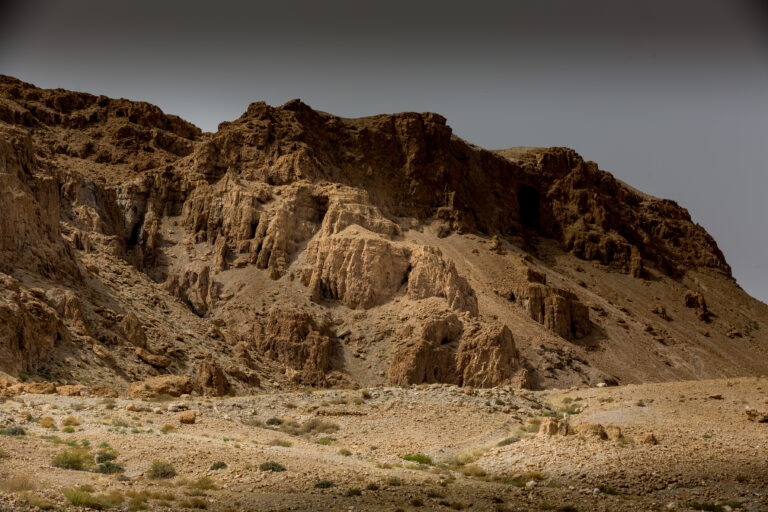
- Lisa Johnston | lisajohnston@archstl.org | Twitter: @aeternusphoto Qumran is located on the northwestern shore of the Dead Sea, several kilometers south of Jericho. In 1947, in a cave just south of Qumran, Bedouins found the first Dead Sea scrolls. Following this discovery, Qumran was excavated by the Dominican Father R. de Vaux in the years 1951-56. A complex of buildings, extending over an area of 100 x 80 m. was uncovered, dating to the Second Temple period. The location of the site and its plan, the scrolls found in the vicinity and the simple ceramic vessels of the inhabitants, bear witness in de Vaux’s view, to a settlement of the Essene sect. We also know of the presence of the Essenes in the Judean Desert and near the Dead Sea from the writings of Pliny the Elder. (Naturalis Historia V, 17)
-
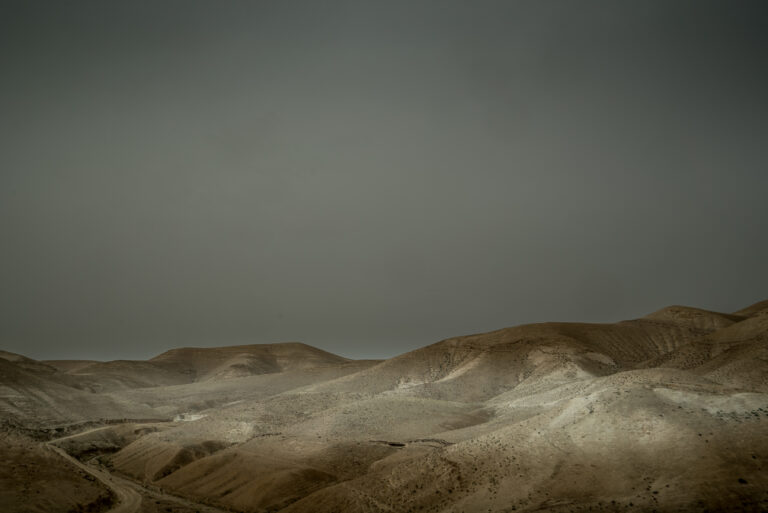
- Lisa Johnston | lisajohnston@archstl.org | Twitter: @aeternusphoto Masada (Hebrew for fortress) is a place of gaunt and majestic beauty located atop an isolated rock cliff at the western end of the Judean Desert overlooking the Dead Sea. Masada is one of the Jewish people’s greatest symbols as the place where the last Jewish stronghold against Roman invasion stood. When the Jewish zealots were facing iniliation from King Herod’s troops, Elazar ben Yair – the Zealots’ leader – decided that all the Jewish defenders should commit suicide; the alternative facing the fortress’s defenders were hardly more attractive than death. Elazar’s final speech clearly was a masterful oration: “Since we long ago resolved never to be servants to the Romans, nor to any other than to God Himself, Who alone is the true and just Lord of mankind, the time is now come that obliges us to make that resolution true in practice …We were the very first that revolted, and we are the last to fight against them; and I cannot but esteem it as a favor that God has granted us, that it is still in our power to die bravely, and in a state of freedom.”
Images above: Judean Desert (try to spot the sheep).
In the Judean Desert, the landscape changes from a moonscape of steep, yellow-bisque ridges of rock to paler, rounded hills of crumbling stone surface. Vegetation is almost nonexistent except for the farms of palm trees grown for their precious date fruit that is a staple of the diet here. Israelis invented a special drip system to water these beautiful palms that gobble up more than 1,000 liters of water a day. Israel, as I continued to find out, is an inventive land, a high-tech center for the global economy, and a land of environmental inventions – from geothermal power to solar power and wind technology.
In the van, we prayed the Divine Mercy chaplet as Zvika, a former Israeli Defense Force tank driver, navigated at a fast pace of kilometers per hour. The sulfur air surrounding the Dead Sea cleared as we rose out of its depths and our nostrils were perfumed by the mingled fragrance of hyssop, rose, mint, lavender, geranium and sage. This strong aroma would fill our lungs throughout our stay, blended with the visual beauty of the landscape and spiritual stirrings of our hearts. In unmatched anticipation, and as we neared David’s City, we prayed his psalms and imagined him dancing with us as we sang Psalm 122: “I rejoiced when they said to me let us go to the house of the LORD. And now our feet are standing within your gates, Jerusalem.”
And all of a sudden, there we were, standing on the promenade of Mount Scopus looking below at the panoramic vista that is the holy city of Jerusalem. The first location you spy is obvious – it’s the former site of the first and second Jewish Temples that were destroyed and later acquired by Muslims. The golden Dome of the Rock reflects the blaring sun and stands in contrast to the other buildings of the city constructed only out of white Jerusalem stone.
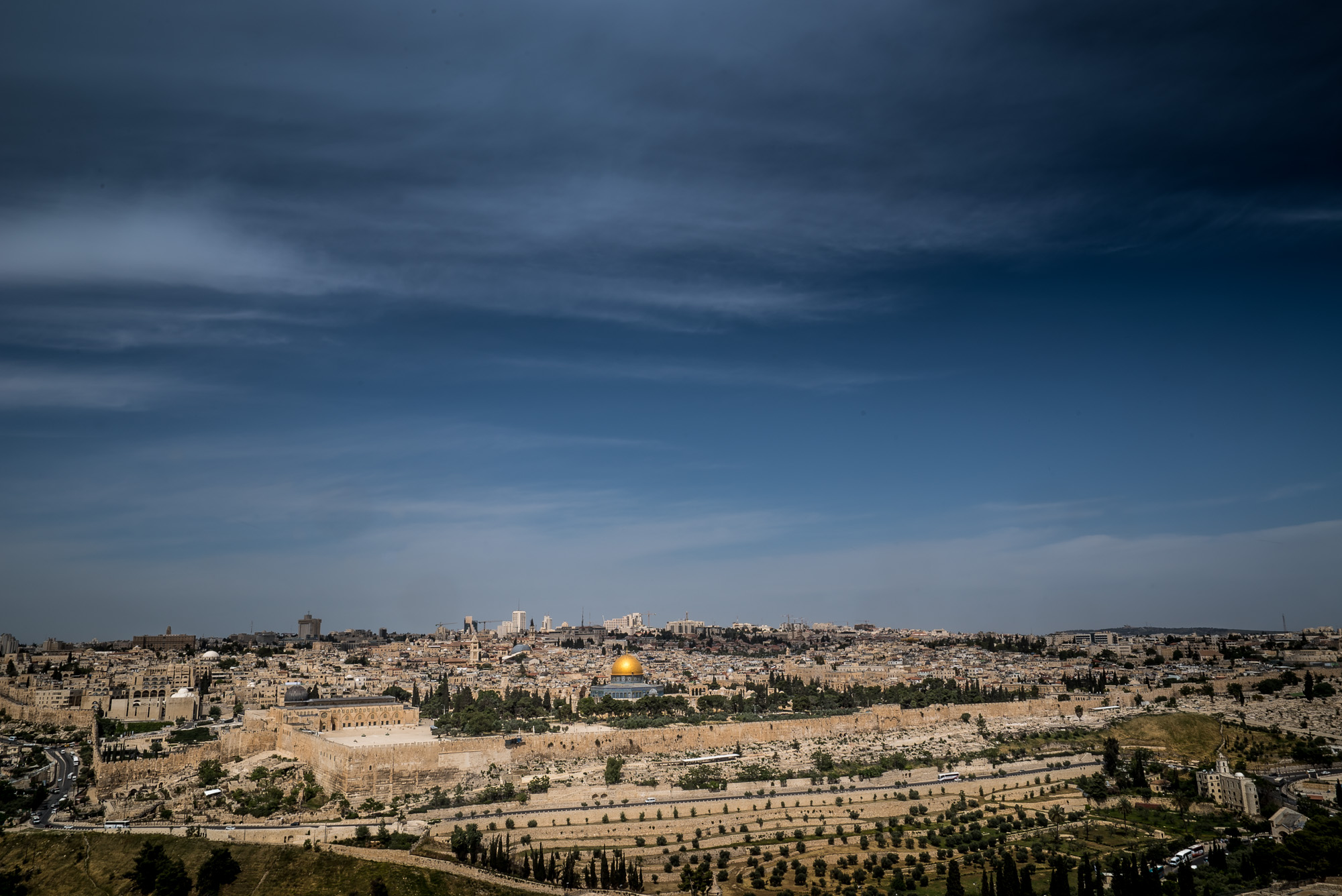
According to Jewish and Christian traditions, the Mosque covers the rock that is the site where Abraham prepared to sacrifice his son Isaac, but his hand was held back by an Angel at the last moment. God was to test Abraham, but only God would call for the ultimate sacrifice of His son, Jesus. The story of Abraham’s near-sacrifice is different in the Quran than in the bible, and Muslims believe that it was not Isaac but Ishmael who was almost killed upon the rock. The book of Genesis tells the story of Ishmael, who was the first son of Abraham begotten from his relationship with Hagar, the handmaid of his wife Sarah. Ishmael is considered by Muslims as the ancestor of several prominent Arab tribes and is the forefather of Muhammad.
As I stood upon the outlook of the city, a strange and new excitement swept over my body, for now, I began to discern other landmarks in the city like the Mount of Olives where Jesus prayed in His last hours of life and the Church of the Holy Sepulcher (Golgatha) the place of His death. It was difficult for me to understand this overwhelming feeling, but being a Midwesterner, I think I can explain it best by relating it to one of the largest, most powerful, and most famous rivers in the world, the Mississippi River. In 1812, the river, which accompanies the same space as the New Madrid Fault Line, reversed its course after a massive earthquake caused a “fluvial tsunami” in the river. The seismic activity sent the water of the river to reverse its course and flow backward for several months. If I were to explain the feeling going on inside of me as I peered towards Jerusalem, it would be that standing on this outlook peering at the most important locations on this earth where my faith was actualized, the spiritual moment caused the blood in my veins to have its own “fluvial tsunami.” I cried, we all four of us cried. We wept because our “feet are standing within your gates, O Jerusalem.”
The excitement of seeing Jerusalem indeed an extraordinary moment, but let us rewind a few days and back up to the beginning of our journey…
END TIMES
We were only in the country a few hours when we drove toward Nazareth, the hometown of the Holy Family. The sun was beginning to set on the landscape as we drove north from Tel Aviv and the villages we passed had many tall, glowing green minaret towers denoting mosque locations for prayer. The word minaret comes from the Arabic word for lighthouse and these distinctive spires with onion-shaped crowns are the towers where Muslims hear the call to prayer broadcast from loudspeakers five times each day: dawn, noon, mid-afternoon, sunset, and night. To compare and contrast, Catholics are called to mark the hours of the day by praying the Divine Office (Officium Divinum). For priests, deacons, and many men and women religious, this prayer is an obligation of their vocation but the practice is not limited to religious for many non-ecclesiastical brethren share in its beauty since the earliest times of Christianity. The hours consist of Matins (during the night), Lauds (dawn), Prime (early morning), Terce (mid-morning), Sext (midday), None (mid-afternoon), Vespers (evening), and Compline (night). All the hours consist of prayers, hymns, psalmody, and scripture readings and the practice of this prayer stems from Christianity’s Jewish roots. During the Babylonian Exile and when the Temple at Jerusalem was no longer used and the first synagogues were being established, praying at fixed hours of the day included Torah readings, praying psalms, and singing hymns became a “sacrifice of praise” and was a substitute for the sacrifices of animals at the Temple. In the book of Acts, we see how the faithful Jews, Peter, and John, were going up to the temple area for the three o’clock hour of prayer. It was during this pilgrimage of prayer that the first miracle of the Apostles took place. A man crippled from birth was at a Temple gate begging when Peter said, “I have neither silver nor gold, but what I do have I give you: in the name of Jesus Christ the Nazarene, [rise and] walk. He leaped up, stood, and walked around, and went into the temple with them, walking and jumping and praising God.” (Acts 3:1-8)
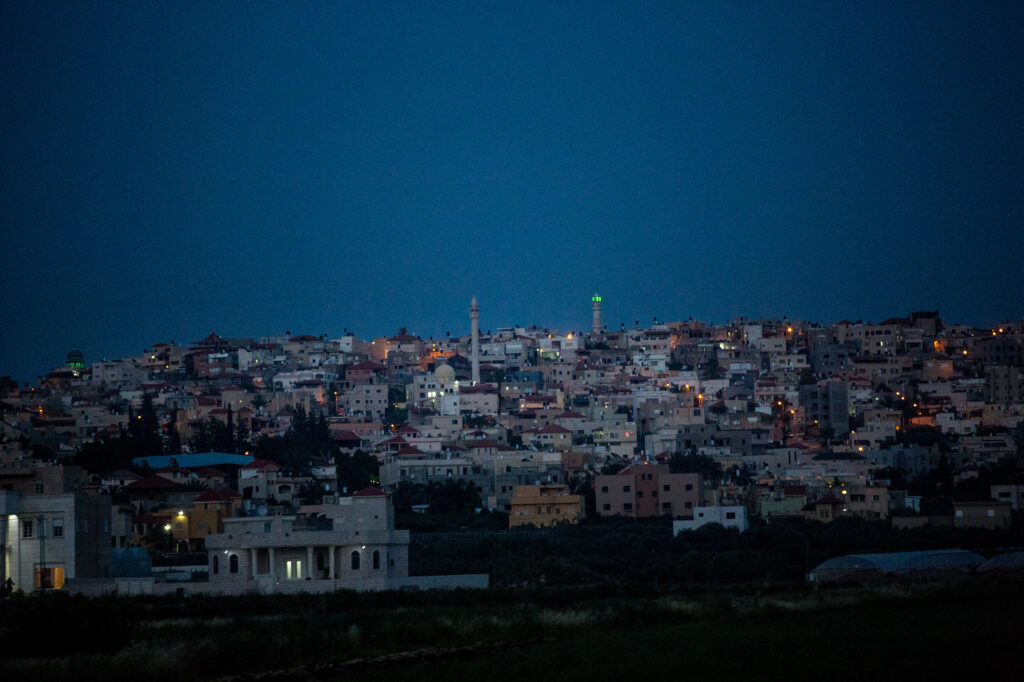
As we drove past the desert villages, we sang Ave Maria and kept punching each other with exasperated gestures of joyful glee – “We are in the Holy Land!” We shook our heads back and forth as it was hard to believe we were here. “Thanks be to God” was a mantra as our astonishment and gratitude mingled with exclamations of emotion. Our Israeli guide, Michal Neumann, sat in the front seat of the van we drove. Sounding much like an airline hostess, she turned on her little microphone every so often to tell us a bit of history or point out a sight of interest. She urged us to call her by the Americanized form of her name which is Michelle, but at this early stage of the trip, we were doing our best to pronounce it in the Hebrew way. Her encouragement to pronounce it the easy way was most probably due to our butchering of her name, but she was very careful not to cringe when we made our best effort. She did not know exactly what to make of the four gregarious Catholic women to be under her tutelage for the next 9 days, but she was a champion of showing us her world.
It was already dark when we entered a valley on the outskirts of Nazareth. I had an inkling of where I was and it was confirmed by Michal who replied, “Yes, this is the Megiddo Valley.” It was then that darkness seemed to get all the darker for me. For we were driving in the place the prophets predicted the end of the world would occur. It is for the name of this valley, Megiddo, that we get the name “Armageddon” or “Apocalypse.” In the New Testament, the book Revelation, which it is believed to have been written by the Apostle John while on the island of Patmos in Greece, admonishes Christians of the first century to stand firm in the faith and to avoid compromise with paganism, despite the threat of adversity and martyrdom. They are to await patiently the fulfillment of God’s mighty promises believing in the triumph of God in the finite world. To await the unfolding of history which begins with Jesus of Nazareth and continues to unfold in the history of the individual Christian who follows the way of the cross, even, if necessary, to a martyr’s death.
We didn’t talk much about martyrdom just then, though I know we all consider it in one form or another in our prayer. There are different ways one can be a martyr in this life. Most often we think of the “red kind” — the ones that involve blood, guts, and the occasional meal of a hungry lion. There is also the “white kind” of martyrdom suffered by those who glorify God by confessing their faith in the face of persecution and suffering greatly for their fidelity to the Church. To think martyrdom is a fad of the past would be foolish when hundreds of men, women, and children have been murdered around in the world in the past several years for refusing to deny their faith. And to deny that we in America are being called to defend our faith during the many persecutions hurled at us from our culture and society means that you are living under a rock. To be traveling through the Valley of Armageddon stirred a little fear in me, knowing that one day outside of time, I will be standing alone with God in my particular judgment and I want Him to see that I would stand fast in my faith to the end, to not be afraid, to be confident only in my love for God alone. I pondered this all night, sleep not coming easily. Throughout the night I wrestled with a few of my own demons and the fatalistic thoughts of my camera gear never arriving from the airline. (Did I mention our luggage never made it with us to Israel?) I rose before the dawn, before the whisper of any rooster or warbling bird, and prayed from the Office of Readings begging the Lord to “Open my lips so my mouth may declare Your praise.” As I watched a white and heavy mist lift from the Megiddo floor, the haze ascended and the world began to awake in a new day full of possibilities and the promise of awaiting grace.
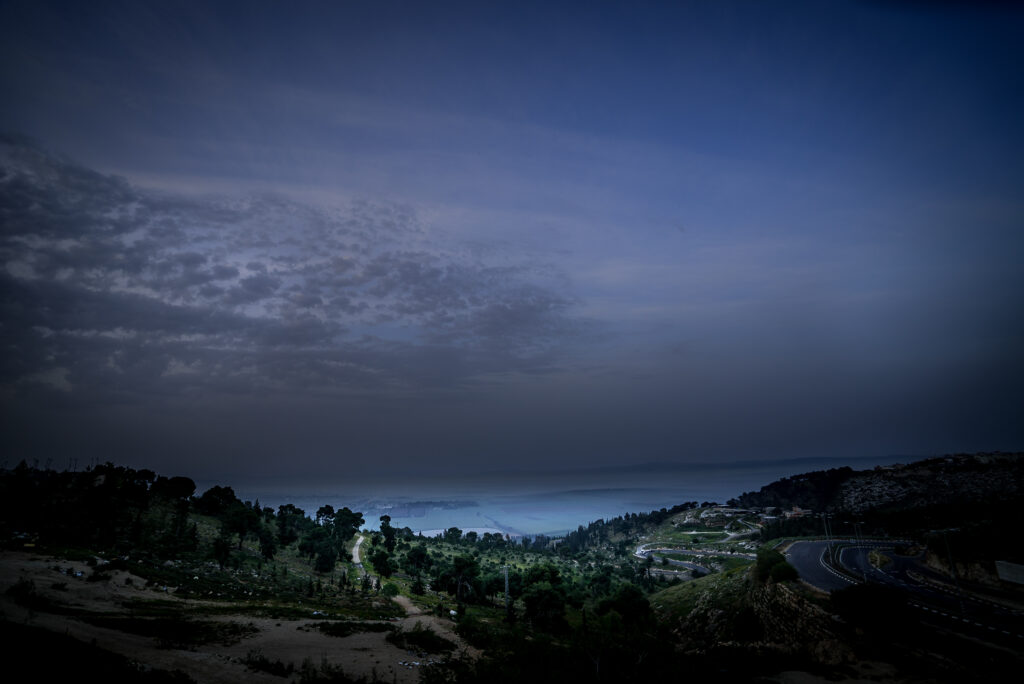
Nazareth
In the hometown of Jesus, an agricultural village that maybe held a couple of hundred people 2,000 years ago, you would be hard-pressed to find a picturesque donkey or a bale of hay. Where once the Holy Family lived in small-town Israel, Nazareth is now a bustle of commerce and is the largest Arab community in the country.
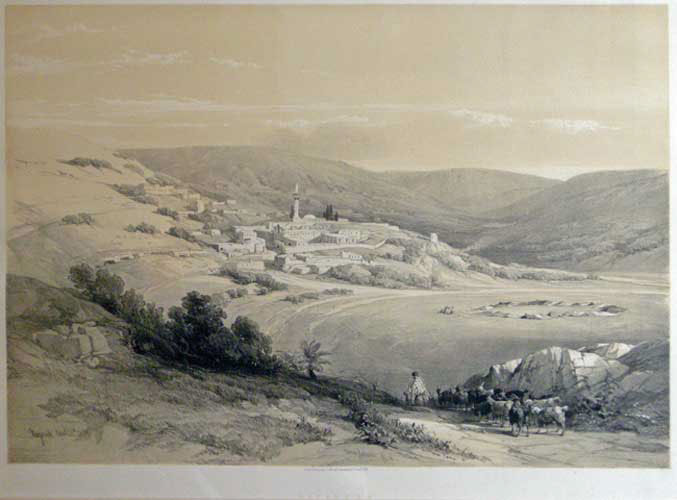
Arabs, by the way, are made up of both the Muslim and Christian faiths. The Arab Christians in Israel are a conglomeration of some 45% Catholic, 45% Orthodox (Greek, Chalcedonian, Armenian, Coptic, Russian, Ethiopian, and Syrian) and another 20% Protestant and yet another 15,000 or so Messianic Jews (Jews who have accepted Jesus Christ as the Messiah.)
-
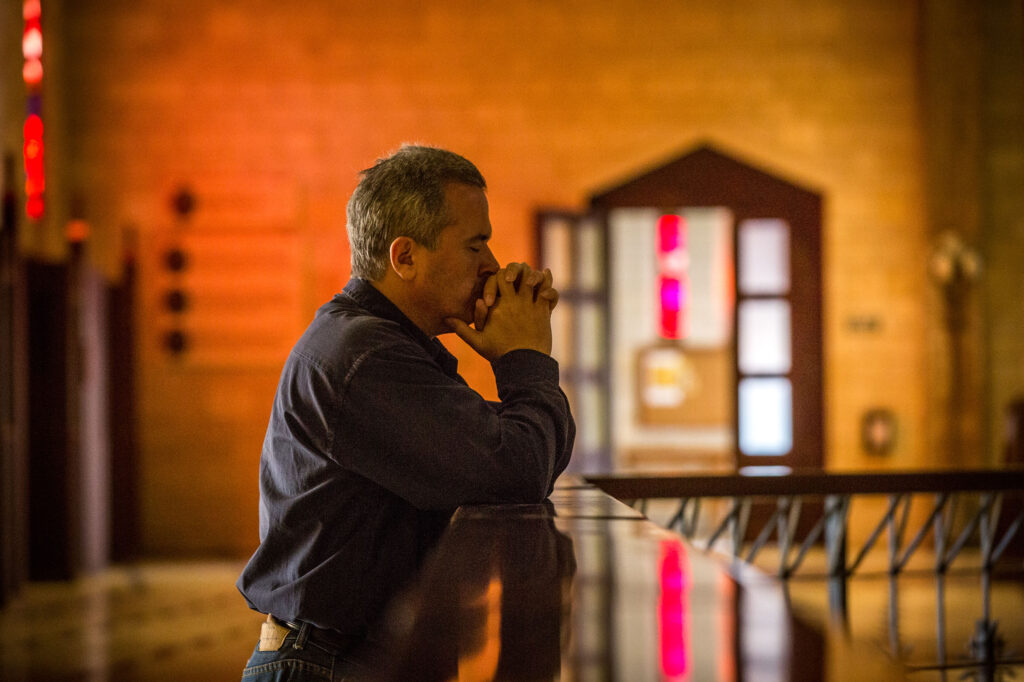
- Lisa Johnston | lisajohnston@archstl.org | Twitter: @aeternusphoto Nazareth, or Natsrat as its name is pronounced in Hebrew, is the cradle of Christianity, the city where, according to tradition, the angel Gabriel told Mary that she would conceive by the power of the Holy Spirit, and the place where Jesus spent his childhood and youth. Nazareth, in the lower Galilee, is located in the heart of a valley surrounded by mountains that embrace several of the most important Christian sites in the world. This is a city of religion and faith, of spirituality and holiness, but also a city with a rich history, fascinating archeology, modern culture and Middle Eastern charm. Nazareth, which began as a small Jewish village about 2,000 years ago, became a stronghold of Christianity in the Byzantine period, just a few hundred years later. During that period the name of Nazareth spread far and wide, and the yearnings to see the place where the Virgin Mary and Jesus Christ had lived turned the city into a popular pilgrimage site. These visits led to the building of the city’s first church – the Church of the Annunciation at the traditional site of Joseph and Mary’s home. Many more churches have been built throughout the city, and were destroyed and rebuilt with the changes in Muslim and Christian rule over the centuries. In the 19th century Nazareth attracted renewed interest and Christians returned to live in this city and rebuilt churches and monasteries. Today Nazareth is the largest Arab city in Israel and has about 30 churches and monasteries, as well as mosques and ancient synagogues.
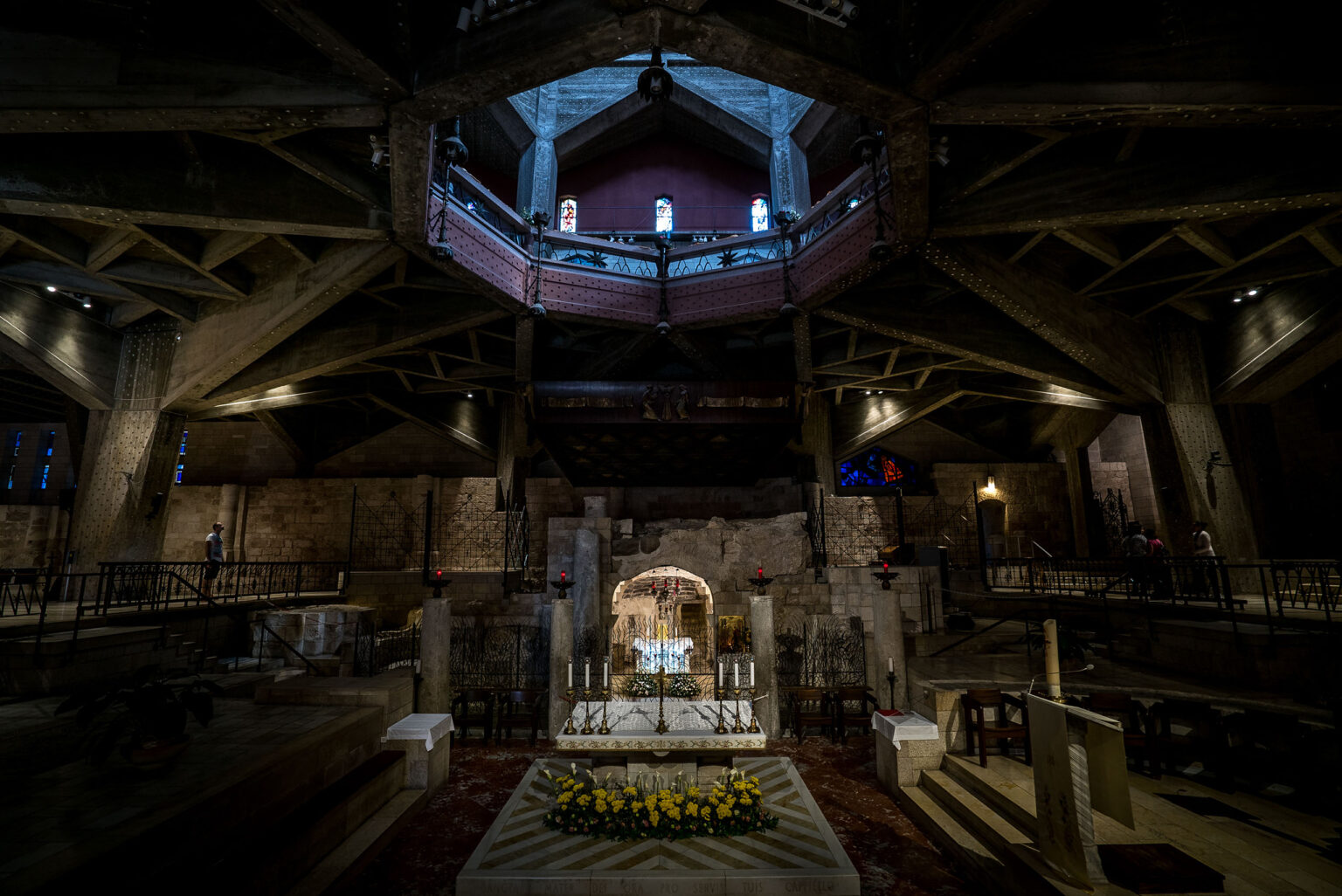
-
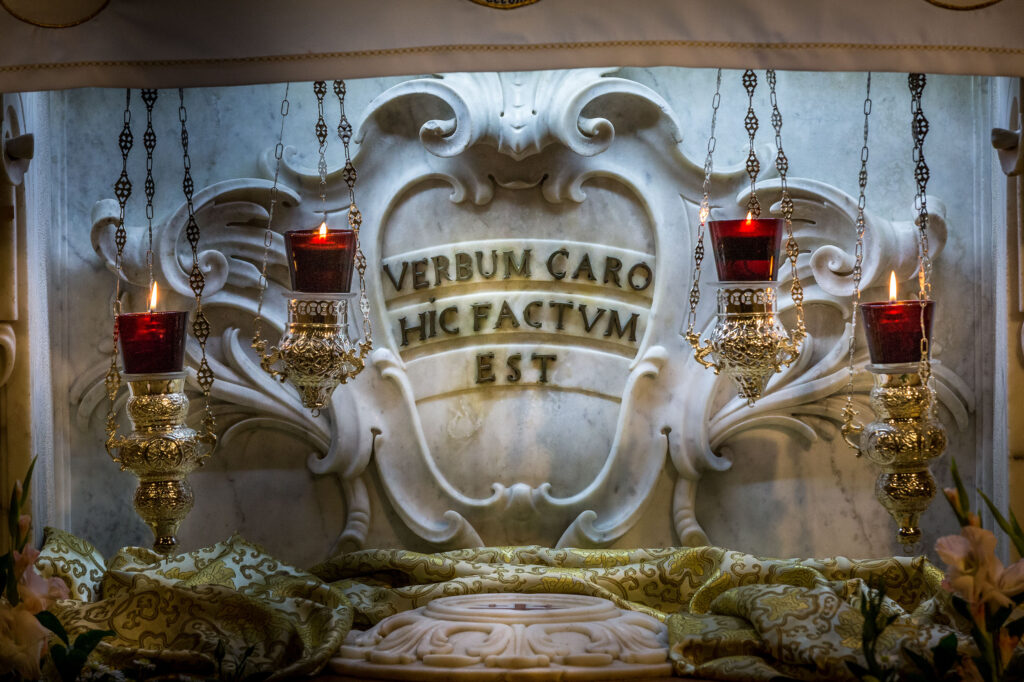
- Lisa Johnston | lisajohnston@archstl.org | Twitter: @aeternusphoto Nazareth, or Natsrat as its name is pronounced in Hebrew, is the cradle of Christianity, the city where, according to tradition, the angel Gabriel told Mary that she would conceive by the power of the Holy Spirit, and the place where Jesus spent his childhood and youth. Nazareth, in the lower Galilee, is located in the heart of a valley surrounded by mountains that embrace several of the most important Christian sites in the world. This is a city of religion and faith, of spirituality and holiness, but also a city with a rich history, fascinating archeology, modern culture and Middle Eastern charm. Nazareth, which began as a small Jewish village about 2,000 years ago, became a stronghold of Christianity in the Byzantine period, just a few hundred years later. During that period the name of Nazareth spread far and wide, and the yearnings to see the place where the Virgin Mary and Jesus Christ had lived turned the city into a popular pilgrimage site. These visits led to the building of the city’s first church – the Church of the Annunciation at the traditional site of Joseph and Mary’s home. Many more churches have been built throughout the city, and were destroyed and rebuilt with the changes in Muslim and Christian rule over the centuries. In the 19th century Nazareth attracted renewed interest and Christians returned to live in this city and rebuilt churches and monasteries. Today Nazareth is the largest Arab city in Israel and has about 30 churches and monasteries, as well as mosques and ancient synagogues.
-
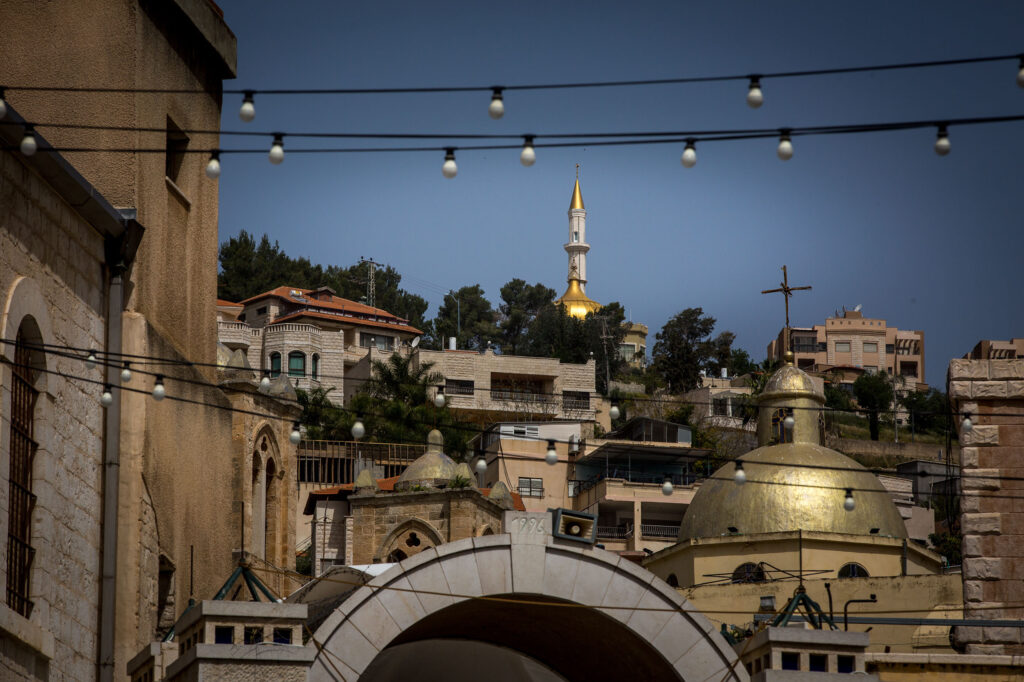
- Lisa Johnston | lisajohnston@archstl.org | Twitter: @aeternusphoto Nazareth, or Natsrat as its name is pronounced in Hebrew, is the cradle of Christianity, the city where, according to tradition, the angel Gabriel told Mary that she would conceive by the power of the Holy Spirit, and the place where Jesus spent his childhood and youth. Nazareth, in the lower Galilee, is located in the heart of a valley surrounded by mountains that embrace several of the most important Christian sites in the world. This is a city of religion and faith, of spirituality and holiness, but also a city with a rich history, fascinating archeology, modern culture and Middle Eastern charm. Nazareth, which began as a small Jewish village about 2,000 years ago, became a stronghold of Christianity in the Byzantine period, just a few hundred years later. During that period the name of Nazareth spread far and wide, and the yearnings to see the place where the Virgin Mary and Jesus Christ had lived turned the city into a popular pilgrimage site. These visits led to the building of the city’s first church – the Church of the Annunciation at the traditional site of Joseph and Mary’s home. Many more churches have been built throughout the city, and were destroyed and rebuilt with the changes in Muslim and Christian rule over the centuries. In the 19th century Nazareth attracted renewed interest and Christians returned to live in this city and rebuilt churches and monasteries. Today Nazareth is the largest Arab city in Israel and has about 30 churches and monasteries, as well as mosques and ancient synagogues.
-
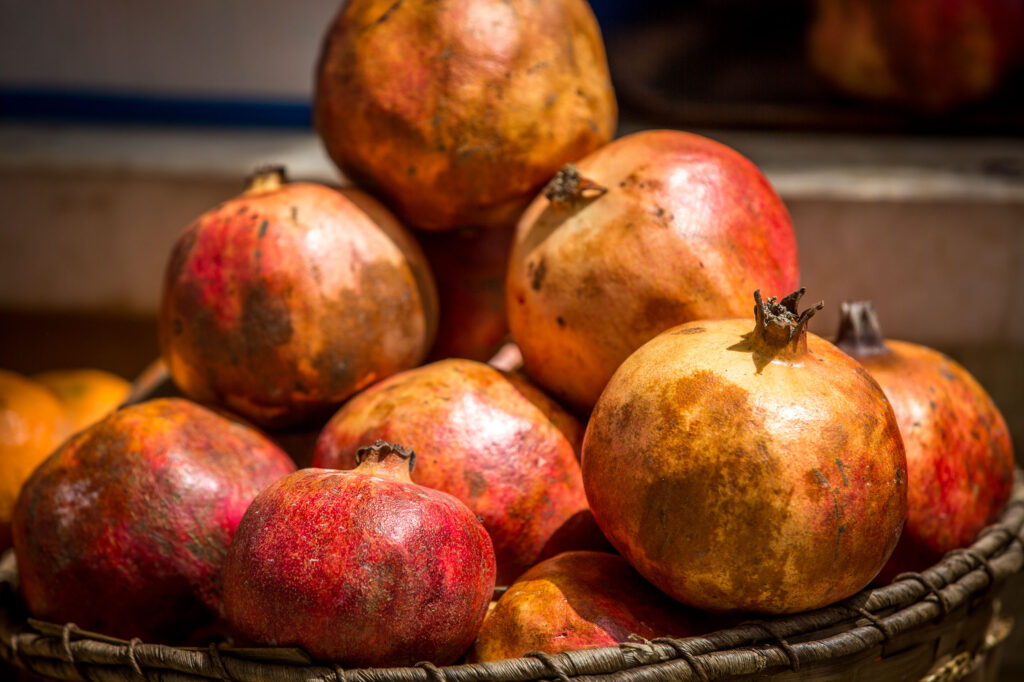
- Lisa Johnston | lisajohnston@archstl.org | Twitter: @aeternusphoto Nazareth, or Natsrat as its name is pronounced in Hebrew, is the cradle of Christianity, the city where, according to tradition, the angel Gabriel told Mary that she would conceive by the power of the Holy Spirit, and the place where Jesus spent his childhood and youth. Nazareth, in the lower Galilee, is located in the heart of a valley surrounded by mountains that embrace several of the most important Christian sites in the world. This is a city of religion and faith, of spirituality and holiness, but also a city with a rich history, fascinating archeology, modern culture and Middle Eastern charm. Nazareth, which began as a small Jewish village about 2,000 years ago, became a stronghold of Christianity in the Byzantine period, just a few hundred years later. During that period the name of Nazareth spread far and wide, and the yearnings to see the place where the Virgin Mary and Jesus Christ had lived turned the city into a popular pilgrimage site. These visits led to the building of the city’s first church – the Church of the Annunciation at the traditional site of Joseph and Mary’s home. Many more churches have been built throughout the city, and were destroyed and rebuilt with the changes in Muslim and Christian rule over the centuries. In the 19th century Nazareth attracted renewed interest and Christians returned to live in this city and rebuilt churches and monasteries. Today Nazareth is the largest Arab city in Israel and has about 30 churches and monasteries, as well as mosques and ancient synagogues.
Images of Nazareth
In Nazareth, we walked uphill towards the Basilica of the Annunciation, where, in the bottom layer of the structure, is a cave that the church was built to enshrine. It is here we met Habib Karam, a Nazarene turned Californian turned Nazarene. Habib studied in the U.S. as a young man, but when it came time to start a family, he quickly found his way home to Israel. Now a father of 4 and a pillar of the faith community, Habib knelt in his favorite part of the church. It overlooks the home where the Blessed Virgin Mary lived and where the archangel Gabriel came to her announcing her grace, proclaiming her to be blessed amongst all women. For Habib, this biblical moment is imagined each day during his visits to Mass, but each Thursday during Eucharistic Adoration, it becomes an extraordinary experience for him. When people come to adoration he says, “I tell people to imagine that you are a little kid visiting your friend – he doesn’t get too many visitors and is so happy to see you. His mother is looking and seeing how happy her son is that he is getting a visit.” And that’s what Habib thinks about when he kneels in adoration. He looks at the doorway to Mary’s home seeing Jesus in the Eucharist and imagining His mother looking over His shoulder – smiling back at the faithful who have gathered to spend time and adore her Son. “I could go hours here,” he said with happiness. The basilica does indeed inspire one to ponder the early, everyday lives of the Holy Family. I thought about Jesus playing with His little friends in town, about Joseph with calloused hands from his workshop and I wondered how nice it would be to cook in the kitchen with our Blessed Mother and learn her secret recipes. I wondered what games they might play together or what their favorite topic of conversation was around the dinner table. I even thought about how cute little-smiling-boy Jesus would have looked when He lost his front baby teeth. Call me crazy, but I wanted to see the three of them together in their everyday routines.
Back out on the streets, we walked through the marketplace where neatly piled stores of pomegranates sat next to braziers for women and freshly harvested garlic. It was a mishmash of staples intertwined with holy land gifts such as plastic bottles for holy water, placemats with maps of Israel and Jesus’ ministry sites as well as olive wood rosaries. There were old men smoking while they played backgammon and old women scarfed from head to toe carrying their loads. The youth of Nazareth drove around in their Toyotas blaring hip-hop music with big sub-woofers hooked up to their stereo systems. The carousing in the streets seemed like a party but was probably just a typical day. It did, however, get us keyed up for our next stop as we headed to a site of the most famous wedding in history- – the ancient nuptial site at Cana.
The “Wedding Church” is about six miles from Nazareth and would have been a nice morning’s walk from Nazareth on a day when your mother would nudge you that it was time to start your ministry and perform your first recorded miracle. Known by Christians as simply “Cana”, this small town is actually known by its Arabic name, Kafr Kanna. It must have been a very special relationship that Mary had with the bride and groom for her to ask Jesus to turn the water into wine that day with the command to “Do whatever He tells you.” Mary’s willingness to ask reminds us to ask too, not just to rely on our own “me-power” but to rely on the power of the Almighty and to rely on the miracles He can do for us. I laughed at the sign that hung on the wall and proclaimed, “This way to the jars.” The signage may have been a bit silly, but it was pointing towards the important part of the Church, the crypt where excavations have revealed old ceremonial 20-30 gallon wine jars. There were six of these stone containers used at the wedding feast which were filled with water for ablution (ritual bathing and washing were extremely important for Jews). This ritual water, however, is not the kind of water one would use to drink with, it is only for purifying and the procedure is to pour water first twice over the right hand and then twice over the left hand (remind you of watching your parish priest at Mass during the liturgy of the Eucharist?) When Jesus turned the waters into the best tasting wine ever, it certainly turned some heads and “so revealed His glory, and His disciples began to believe in Him.” And, what a generous wedding present to give, that was a lot of wine!
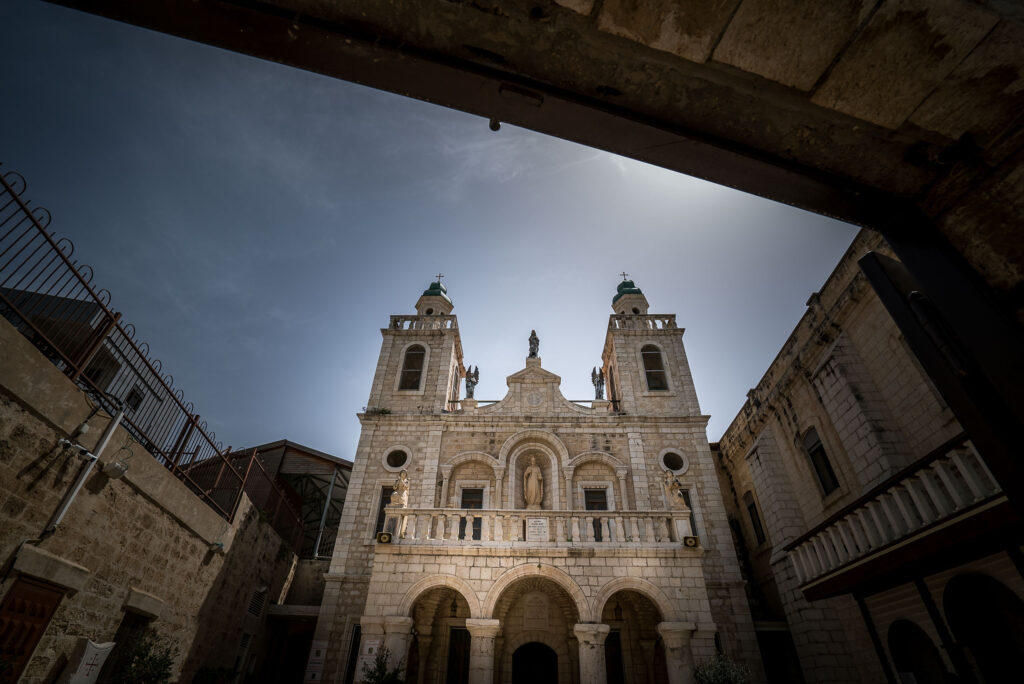
The Sea of Galilee
The list of things I have never seen is large, but after this trip, I can check off seeing enormous flocks of migrating storks flying over the Sea of Galilee. This happened at the Mount of Beatitudes as we were setting up a time-lapse shot outside the church. Apparently, at the height of migration time, thirty-one thousand storks fly down the country to rest in the Negev Desert and around the Dead Sea before heading to their winter homes in eastern Africa. The picturesque hillside near Tabgha overlooks the waters extending a vista towards the cliffs of the Golan Heights on the far shore. While this may or may not be the exact spot of Jesus’ dissertation, it certainly is a likely location as his ministry extended all up and down the shoreline from His hub in Capernaum that is less than 3 miles away. It is a tranquil spot and one can imagine sitting on the grass hanging on every blessed word that came forth from the Savior’s lips. I found myself meditating on the first part St. Matthew records in Chapter 5 of his Gospel, “Blessed are the poor in spirit for theirs is the kingdom of heaven.” As I took a few moments to pray in the Church and wander around the grounds with my cameras. I prayed for those who are poor in spirit — for those who struggle daily with anxiety or depression or just with the everyday tumult of their lives (I believe that may include prayers for every single soul on earth.)
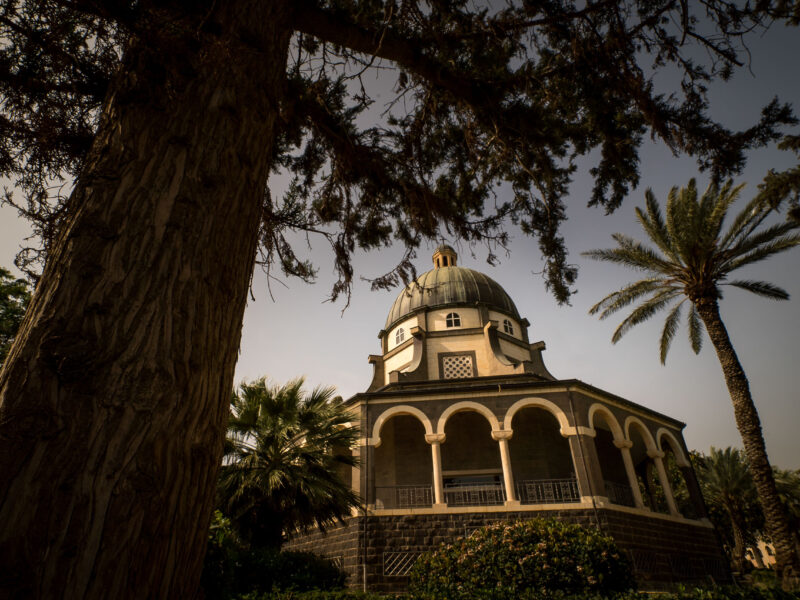
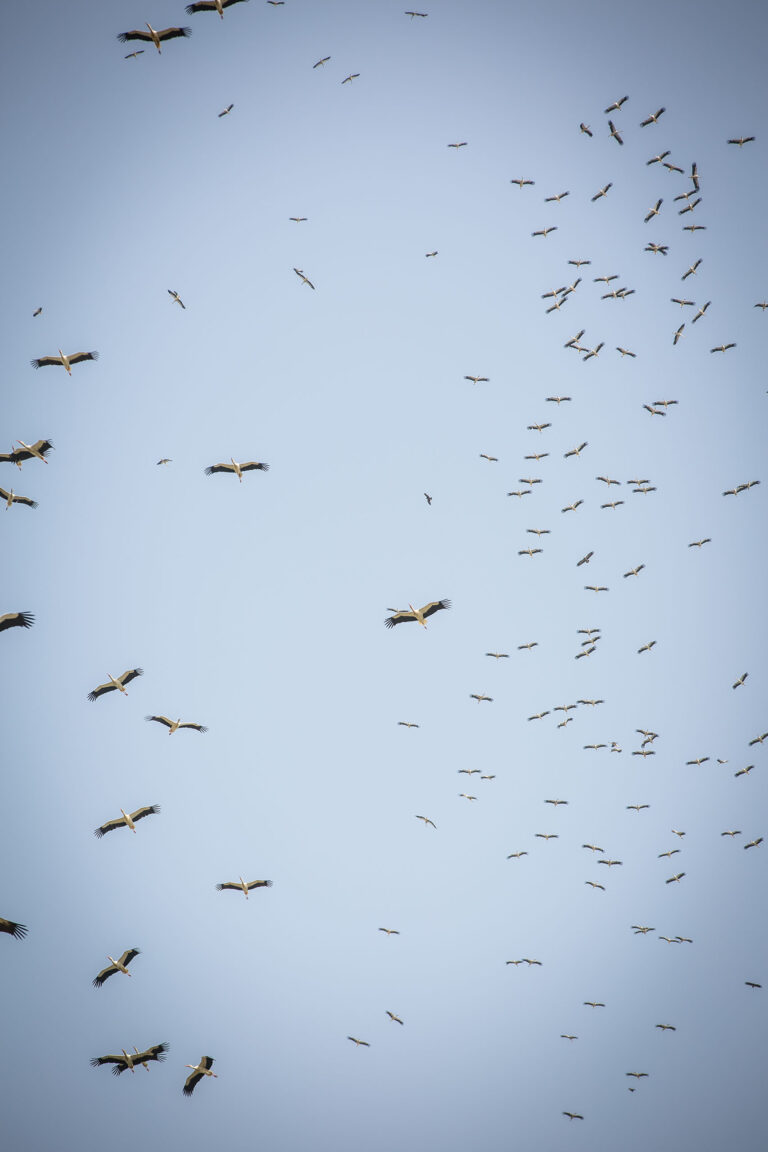
Church of the Beatitudes & a flock of stork.
The Church of the Primacy of St. Peter appeared to me like a stone fortress. But to be honest, I hardly looked at the Church because I was too busy running toward the water to stop and notice. Finally, I was on the shoreline of this amazing sea! I had full access to the fresh waters, and I was dying to get my feet wet! It was with great satisfaction that my shoes came off, and moments later I was joined by a throng of well-dressed, babushka-wearing women from Ukraine who were themselves on pilgrimage. I think some of those ladies were even more excited to be there than I was and soaking ourselves together in the water bonded us instantly as sisters in Christ.
Ukrainian women on pilgrimage from St. Volodymyr and Olah Church in Lviv and Church of the Resurrection in Vinnytsia.
Like I said, the church looks somewhat like a fortress. The Franciscans keep watch over this spot that is sometimes still referred to as the Place of the Coals because Jesus prepared fish here for His Apostles after His resurrection. Inside the church is a rock the faithful may venerate because it is claimed the site of the breakfast fire the Divine Chef built to cook the fish He miraculously heaped into their nets.
It’s really just hard to comprehend that these moments in time, these miracles of our Lord actually took place. I mean, the stories we have heard for decades, over and over and over again. These things actually took place on this earth. Not in some mystical other-world, they happened here! They happened in this blessed, wonderful, holy land called Israel. It is really blowing my mind, it is really moving my spirit in a new direction. And, so as I progress on this pilgrimage in the Year of Mercy, I wonder what lesson my soul is supposed to learn. I meditate for a moment on the words spoken in John Chapter 21 before the next event takes place:
He said to him the third time, “Simon, son of John, do you love me?” Peter was distressed that He had said to him a third time, “Do you love me?” and he said to Him, “Lord, you know everything; you know that I love you.” [Jesus] said to him, “Feed my sheep."
So, the world is really very small. I know it seems big, but it really is small. As the sun was beginning to move into the late afternoon hours, my meditation on John’s Gospel winding down and my new Ukrainian friends departing to their bus with freshly washed feet, a familiar face was suddenly next to mine. While the face was somewhat camouflaged in dark Blues Brothers sunglasses, there was no mistake it was the good, young Father Connor Sullivan, associate pastor at St. Francis of Assisi Parish in St. Louis. It turns out he was on pilgrimage himself, and we all rejoiced and had a hearty laugh at the serendipity. It was the icing on the cake of a marvelous day.
-
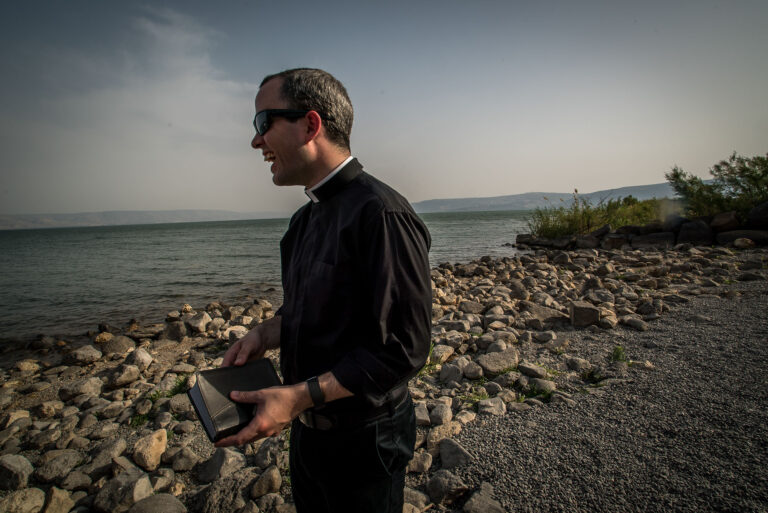
- Lisa Johnston | lisajohnston@archstl.org | Twitter: @aeternusphoto Kinnereth (Cinnereth) – the name of Sea of Galilee in Hebrew. The Sea of Galilee is located in the east side of the Galilee, in the north of Israel. It is a large sweet water lake and most of its water comes from the northern Jordan river. It also comes from springs and flow of water from the surrounding hills in the winter time. The water comes out through the southern Jordan river that flows to the Dead sea. The landscape is lush and in deep contrast to the arid and barren lands of the south of Israel. St. Francis of Assisi Parish’s Associate Pastor, Father Connor Sullivan, stood on the shore of the Sea of Galilee where he prayed Evening Prayer.
-

- Lisa Johnston | lisajohnston@archstl.org | Twitter: @aeternusphoto Kinnereth (Cinnereth) – the name of Sea of Galilee in Hebrew. The Sea of Galilee is located in the east side of the Galilee, in the north of Israel. It is a large sweet water lake and most of its water comes from the northern Jordan river. It also comes from springs and flow of water from the surrounding hills in the winter time. he water comes out through the southern Jordan river that flows to the Dead sea. The landscape is lush and in deep contrast to the arid and barren lands of the south of Israel. The Church of the Primacy of Peter is a modest Franciscan chapel that incorporates part of a 4th-century church. It is located at Tabgha on the northwest shore of the Sea of Galilee and commemorates Jesus’ reinstatement of Peter after a fish breakfast on the shore.
Father Connor Sullivan | Church of the Primacy of Peter
The Spontaneous Act That Went a Bit Viral.
The day after our visit to the churches along Jesus’ mission territory, we started the morning with a fun little adventure. Our good guide Michele had set up for us a jaunt on a replica fishing vessel from the time of Christ. There were several boats heading out on the sea at the same time as we disembarked. The boats were large and could hold bus-loads of pilgrims but ours was a small an intimate vessel. It was quiet as we pulled out of the dock but suddenly the beautiful silence was interrupted by a blast of music from one of the larger boats. They were blaring the “Star Spangled Banner” about 250 yards off our port bow, so we figured it was American pilgrims on board. It doesn’t matter where you are in the world, hearing those few notes initializes a fervor of patriotic spirit and the words “O, say can you see” come melodically out of your throat in an astonishing way. We waved back and forth with the other boat until we were at a far enough distance to be wrapped in silence again. We decided it was time to read scripture together and pray.
From the bow of our boat.
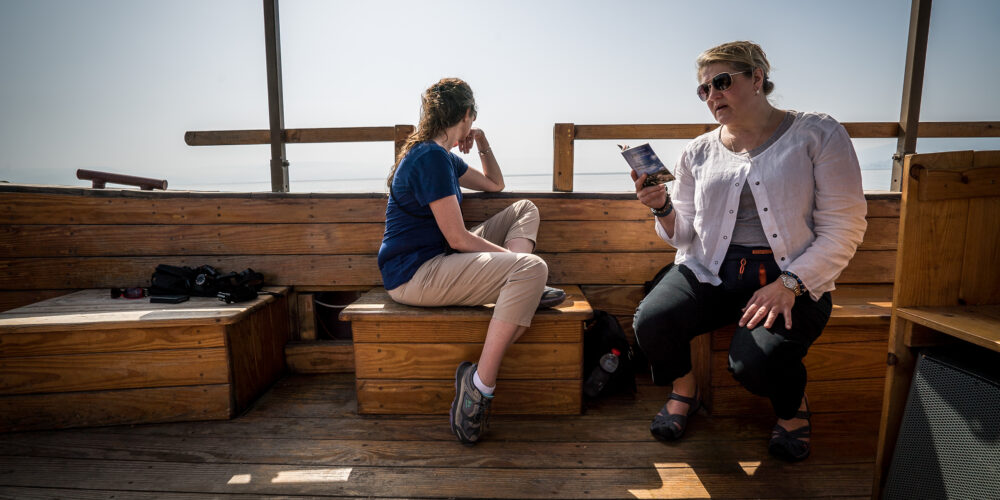
I was filming as we slowly drifted in the boat when I got the inspiration. I asked our captain, “So, does anyone ever go swimming here?”
“No,” he replied.
“Is it illegal to swim here?,” I asked.
“No, certainly not,” he said.
“You want to go in – don’t you,” he asked.
“Absolutely!,” I replied.
Not missing a beat, our colleague Christine Schicker told me that I cannot possibly jump in what I am wearing, so she offered her brand new shirt to me. (Christine is about the most sweet and motherly bit of wonderfulness in the world in case you were wondering.) I threw off my shoes and prepared to jump when I was held back by the pleas of Denise Bossert and my buddy from the Archdiocese of St. Louis, Elizabeth Westhoff. “Wait,” they shouted, “we have to get this on film!” The result is below. It was posted to the Pilgrimage to the Holy Land’s Facebook account and now has been seen by over half a million people. (Good golly, what a commotion over a little bit of spiritual joy and exuberance.) I’m sharing the video because I feel I cannot tell my full Holy Land story without sharing this moment. And I hope that you will be able to actually feel the cool wonderfulness of my water blessing as I share it with you because as I type this I am remembering how wonderful it felt.
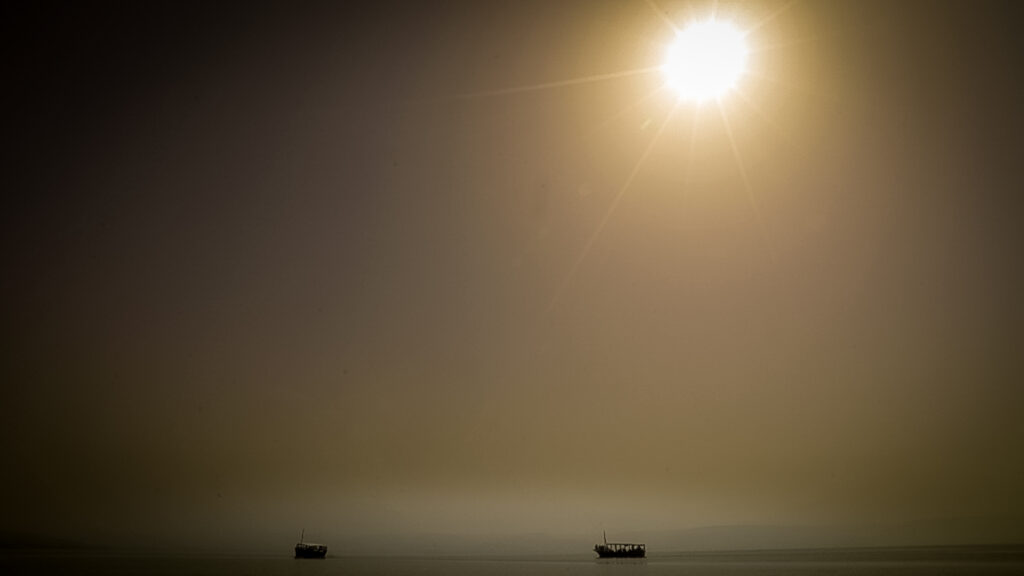
Magdala - the Pompeii of Israel
Mary Magdalene is a woman who’s sinful reputation has often been greatly misunderstood and misrepresented but Jesus elevated this contrite woman, this great sinner, to be the symbol of hope for all sinners.
Turns out that Mary gets her name from the town of Magdala, a town on the shores of the Galilee that is estimated to have been populated by nearly 40,000 people and a fleet of over 200 boats. Mary was a a wealthy woman, and she must have has substantial savings/earnings if she was living as a single woman. It is unfortunate that her identity became confused with the biblical Mary who had been a prostitute and cured of seven demons. Mary’s reputation first became besmirched after Pope Gregory the Great gave a homily in 591 where he linked the Mary’s together. Folks got confused and ever since there have been tall spun until the most recent scandal as portrayed by Dan Brown in his DaVinci Code disaster.
What we do know about Mary, “The Apostle of the Apostles” is that she accompanied Jesus to the foot of the Cross and later she met him at the tomb as the first “witness of Divine Mercy.” St. John’s Gospel tells us that Mary Magdalene wept because she could not find the body of the Lord, and that Jesus had mercy on her by letting himself be known as her Master, thus transforming her tears from sad to glad.
“Her tears at Christ’s empty tomb are a reminder that sometimes in our lives, tears are the lenses we need to see Jesus.” said Pope Francis during a Mass in 2013.
-
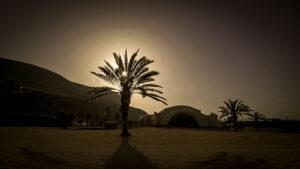
- Lisa Johnston | lisajohnston@archstl.org | Twitter: @aeternusphoto Jesus spent the majority of his ministry in the Galilee region. It is in Galilee that Jesus established his home base, called his disciples, and performed many of the great miracles we read about in Scripture. Sincere pilgrims come to Galilee to visit these holy sites to deepen their faith experience and grow closer to their risen Lord, Jesus Christ. Archeologists discovered a First Century Synagogue where it is certain that Jesus taught. Inside the synagogue they also found The Magdala Stone, a discovery many archaeologists call the most significant archaeological find in the past 50 years. As archaeologists continued to dig, they discovered an entire first century Jewish town lying just below the surface. With only 10% of the archaeology uncovered, the hometown of Mary Magdalene already provides pilgrims an authentic location to walk where Jesus taught and to connect with the first century life of Jesus’ followers.
-
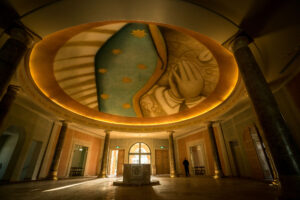
- Lisa Johnston | lisajohnston@archstl.org | Twitter: @aeternusphoto Jesus spent the majority of his ministry in the Galilee region. It is in Galilee that Jesus established his home base, called his disciples, and performed many of the great miracles we read about in Scripture. Sincere pilgrims come to Galilee to visit these holy sites to deepen their faith experience and grow closer to their risen Lord, Jesus Christ. Archeologists discovered a First Century Synagogue where it is certain that Jesus taught. Inside the synagogue they also found The Magdala Stone, a discovery many archaeologists call the most significant archaeological find in the past 50 years. As archaeologists continued to dig, they discovered an entire first century Jewish town lying just below the surface. With only 10% of the archaeology uncovered, the hometown of Mary Magdalene already provides pilgrims an authentic location to walk where Jesus taught and to connect with the first century life of Jesus’ followers.
-
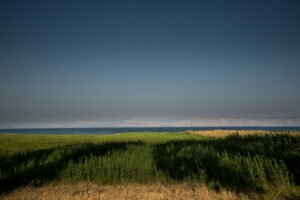
- Lisa Johnston | lisajohnston@archstl.org | Twitter: @aeternusphoto Jesus spent the majority of his ministry in the Galilee region. It is in Galilee that Jesus established his home base, called his disciples, and performed many of the great miracles we read about in Scripture. Sincere pilgrims come to Galilee to visit these holy sites to deepen their faith experience and grow closer to their risen Lord, Jesus Christ. Archeologists discovered a First Century Synagogue where it is certain that Jesus taught. Inside the synagogue they also found The Magdala Stone, a discovery many archaeologists call the most significant archaeological find in the past 50 years. As archaeologists continued to dig, they discovered an entire first century Jewish town lying just below the surface. With only 10% of the archaeology uncovered, the hometown of Mary Magdalene already provides pilgrims an authentic location to walk where Jesus taught and to connect with the first century life of Jesus’ followers.
-
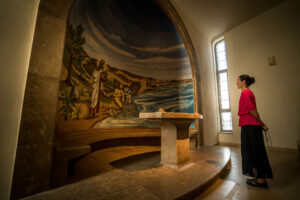
- Lisa Johnston | lisajohnston@archstl.org | Twitter: @aeternusphoto Jesus spent the majority of his ministry in the Galilee region. It is in Galilee that Jesus established his home base, called his disciples, and performed many of the great miracles we read about in Scripture. Sincere pilgrims come to Galilee to visit these holy sites to deepen their faith experience and grow closer to their risen Lord, Jesus Christ. Archeologists discovered a First Century Synagogue where it is certain that Jesus taught. Inside the synagogue they also found The Magdala Stone, a discovery many archaeologists call the most significant archaeological find in the past 50 years. As archaeologists continued to dig, they discovered an entire first century Jewish town lying just below the surface. With only 10% of the archaeology uncovered, the hometown of Mary Magdalene already provides pilgrims an authentic location to walk where Jesus taught and to connect with the first century life of Jesus’ followers.
-
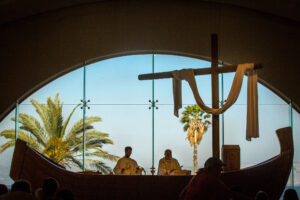
- Lisa Johnston | lisajohnston@archstl.org | Twitter: @aeternusphoto Jesus spent the majority of his ministry in the Galilee region. It is in Galilee that Jesus established his home base, called his disciples, and performed many of the great miracles we read about in Scripture. Sincere pilgrims come to Galilee to visit these holy sites to deepen their faith experience and grow closer to their risen Lord, Jesus Christ. Archeologists discovered a First Century Synagogue where it is certain that Jesus taught. Inside the synagogue they also found The Magdala Stone, a discovery many archaeologists call the most significant archaeological find in the past 50 years. As archaeologists continued to dig, they discovered an entire first century Jewish town lying just below the surface. With only 10% of the archaeology uncovered, the hometown of Mary Magdalene already provides pilgrims an authentic location to walk where Jesus taught and to connect with the first century life of Jesus’ followers.
-
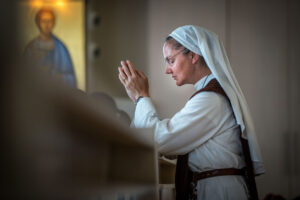
- Lisa Johnston | lisajohnston@archstl.org | Twitter: @aeternusphoto Jesus spent the majority of his ministry in the Galilee region. It is in Galilee that Jesus established his home base, called his disciples, and performed many of the great miracles we read about in Scripture. Sincere pilgrims come to Galilee to visit these holy sites to deepen their faith experience and grow closer to their risen Lord, Jesus Christ. Archeologists discovered a First Century Synagogue where it is certain that Jesus taught. Inside the synagogue they also found The Magdala Stone, a discovery many archaeologists call the most significant archaeological find in the past 50 years. As archaeologists continued to dig, they discovered an entire first century Jewish town lying just below the surface. With only 10% of the archaeology uncovered, the hometown of Mary Magdalene already provides pilgrims an authentic location to walk where Jesus taught and to connect with the first century life of Jesus’ followers.
Magdala
So what can be discovered in our souls at the actual town of Magdala? Well, in 2009, The Legion of Christ wanted to establish an institute for Catholic women and retreat center there. They were able to acquire the land but not able to build until they, like everyone one who wants to build in Israel, first performed an archeological survey. At first the dig was quite uneventful and they were about to wrap things up and start building when they decided to check one more spot on the property. What they discovered during the survey was a First Century Synagogue where it is all but certain that Jesus prayed, worshiped and perhaps even taught. Exploring further, archeologists also found The Magdala Stone, a discovery many call the most significant archaeological find in the past 50 years.
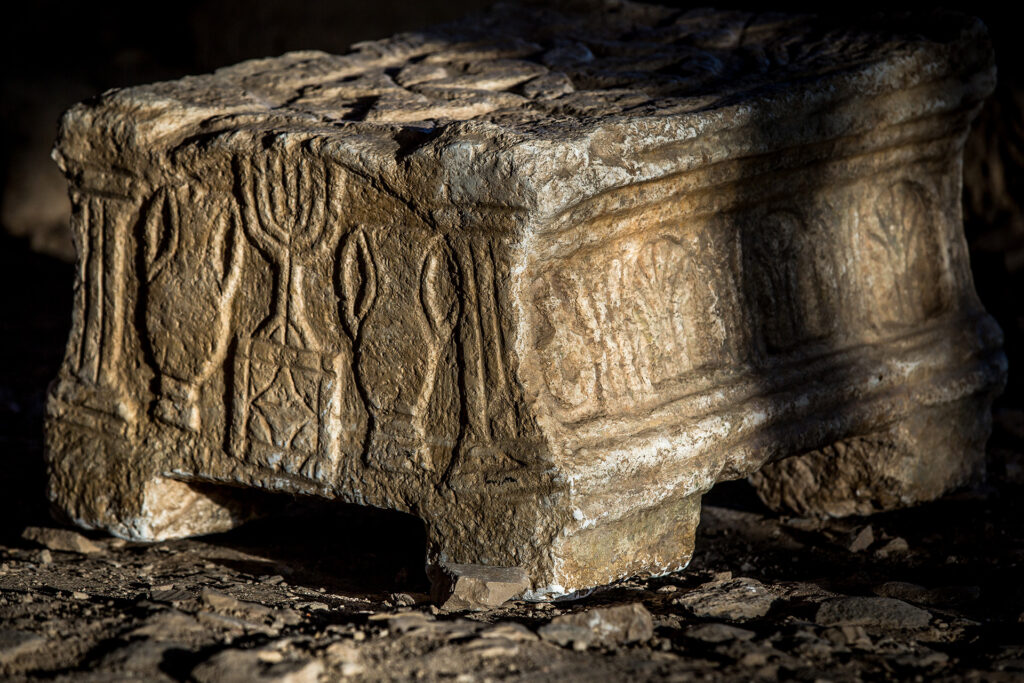
As archaeologists continued to dig, they discovered an entire first century Jewish town lying just below the surface and it included ritual baths, mosaics and frescoes. The other neato discovery was the “Jesus Boat” they found down by beach that was dated to around the time of Christ. When the Legionnaires built their new church on the site, they modeled the altar after this wooden fishing boat.There are eight pillars inside the church representing women of salvation history:
There are eight pillars inside the church representing women of salvation history. Many of these seven women we have taken with us interiorly on our spiritual journey but what we were not expecting was the women we would meet on the eighth pillar:
- Mary Magdalene – apostle of apostles
- Susana and Joanna, the wife of Chuza – followers of Jesus
- Mary and her sister Martha – followers of Jesus
- Salome, the mother of James and John – supporter of Jesus and wife of Zebedee
- Simon Peter’s mother-in-law – healed by Jesus
- Mary, wife of Cleopas – follower of Jesus and present at his crucifixion
- Many other women – the unnamed women who followed and supported Jesus
- Unmarked Pillar – for women of all time who love God and live by faith
So I guess I’m going to leave you hanging here because after we leave Magdala we are heading out of the Galilee with a quick detour north before heading to the Judean Desert and Jerusalem. Stay tuned for Part II of our pilgrimage adventure and please feel free to send us a Tweet or share the story on your Facebook. And, by all means, get in touch with the Israel Ministry of Tourism (IMOT) or visit their Facebook page and start making your own plans to visit this most Holy Land!
